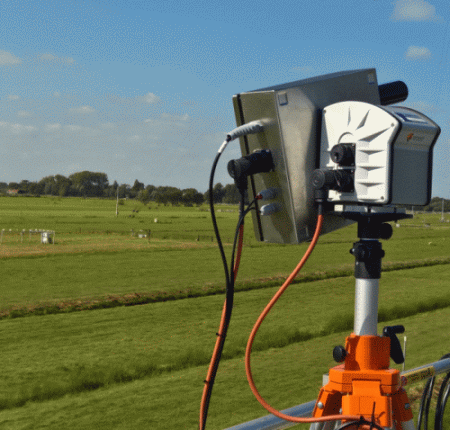MAX-DOAS (Multi-AXis Differential Optical Absorption Spectroscopy)
-
The Differential Optical Absorption Spectroscopy (DOAS) method, introduced by Perner and Platt (1979), was initially applied to measure tropospheric trace gases such as NO2 by using artificial light sources.
- The DOAS technique is a widely-used remote sensing method to retrieve trace gases with narrow band absorption structures in the UV and visible part of the electromagnetic spectrum.
Based on Lambert-Beer’s law, this spectroscopic technique makes use of the absorption of electromagnetic radiation by matter.
In addition to using artificial light sources (active DOAS), DOAS was also designed to use direct and scattered sunlight as its light source (passive DOAS).
The latter and passive type of DOAS was initially intended to observe stratospheric trace gas amounts by pointing the telescope into the zenith direction.
The main difference between the active and passive DOAS methods lies in the light path length.
While the light path length is clearly defined for active DOAS, efforts are needed to determine the effective light path length in the atmosphere for passive DOAS.
-
The DOAS principle can be applied to various ground-based, ship-based, aircraft-based, and satellite-based platforms (e.g. Platt and Stutz, 2008 and references therein).
After successful application of the zenith scattered light DOAS, which mainly yields stratospheric trace gas amounts (e.g. Noxon, 1975; Solomon et al., 1987; Richter et al., 1999; Wittrock et al., 2000), the development of Multi-AXis (MAX) DOAS allowed for the extension of the technique to tropospheric trace gases and aerosols by observing scattered sunlight at different viewing directions (Hönninger et al., 2004; Wagner et al., 2004; Wittrock et al., 2004).
- Although MAX-DOAS is relatively simple to operate, the interpretation of the data requires detailed information about the radiation transport in the atmosphere, especially in terms of aerosol scattering (Mie scattering).

